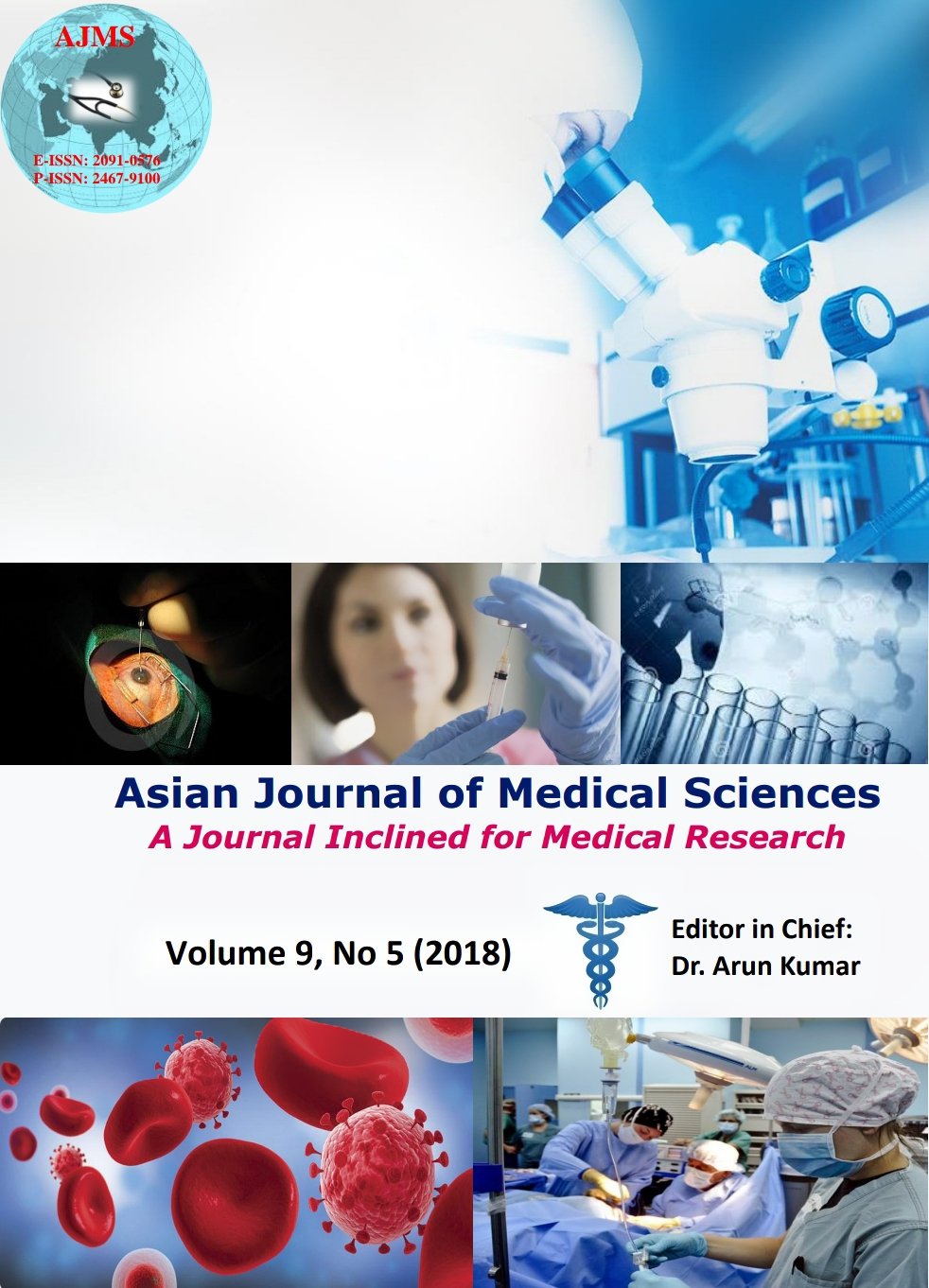Factors associated with Distal Radio-Ulnar Joint (DRUJ) instability in patients with Distal Radius Fractures
Keywords:
Distal radius fractures, DRUJ, InstabilityAbstract
Background: Distal Radius Fractures (DRF) are common fractures with variety of complications if treated inadequately. Among them, Distal Radio-Ulnar Joint (DRUJ) instability is one of the common residual disabilities leading to chronic and persistent subluxation or dislocation of the DRUJ which causes arthritis, pain and limitation of the hand functions.
Aims and Objectives: This study aims to identify the factors either clinical of radiographic, indicative of DRUJ instability patients in acute DRF which may help the orthopedic surgeons to correctly diagnose and allow proper treatment.
Materials and Methods: All patients from Aug 1, 2016-July 31, 2017 with acute DRF who were treated at Manipal Teaching Hospital were examined and evaluated for DRUJ instability. The demographic, clinical and radiological parameters of all the patients were analyzed and compared with those with stable DRUJ. Preoperatively all the fractures were classified using AO classification. Based on the classification, the association of fracture comminution, and intra-articular involvement with DRUJ instability, as well as its relation to the osteoporotic age was analyzed. Associated ulna styloid fracture and sigmoid notch involvement if present was noted with its size and displacement.
Results: Out of 74 wrists, there were 30 males and 44 females, with a mean age of 44 (range 18-79). Most of the females (72%, n=32/44) sustained low energy trauma, while most of the males (77%, n=23/30) sustained high energy trauma. Irrespective of the sex, it was noted that DRUJ instability was significantly higher in males (p<0.0001) and in the non-osteoporotic age group (p=0.05). In our study 72.72% of DRF was associated with unstable DRUJ in patients with high energy trauma. AO types A3/B3/C3 (81.25%, n=26/32) was associated with more DRUJ instability compared to less comminuted fractures as AO type A2/B2/C2 (56%, n=14/25) or A1/B1/C1 (29.41%, n=5/17) (p<0.001). AO type C (43.24%, n=32) were associated with more DRUJ instability as compared to AO type B (25.67%, n=19) or AO type A (31.08%, n=23) (p=0.009). Ulnar styloid fractures was noted in 37.83% (28/74) of DRF and 35 (47.29%) patients had involvement of the sigmoid notch out of which 7 (20%) was displaced > 2mm and 28 (80%) was undisplaced.
Conclusion: Factors associated with DRUJ instability in DRF were young male patients, high energy trauma, displaced ulnar styloid base fractures, sigmoid notch involvement, AO type C.
Asian Journal of Medical Sciences Vol.9(5) 2018 62-66
Downloads
Downloads
Published
How to Cite
Issue
Section
License
Authors who publish with this journal agree to the following terms:
- The journal holds copyright and publishes the work under a Creative Commons CC-BY-NC license that permits use, distribution and reprduction in any medium, provided the original work is properly cited and is not used for commercial purposes. The journal should be recognised as the original publisher of this work.
- Authors are able to enter into separate, additional contractual arrangements for the non-exclusive distribution of the journal's published version of the work (e.g., post it to an institutional repository or publish it in a book), with an acknowledgement of its initial publication in this journal.
- Authors are permitted and encouraged to post their work online (e.g., in institutional repositories or on their website) prior to and during the submission process, as it can lead to productive exchanges, as well as earlier and greater citation of published work (See The Effect of Open Access).




